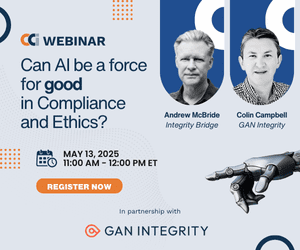Shanil Williams of AGCS examines how the ongoing global pandemic is affecting the C-Suite and what directors and officers need to know about claims in this environment.
“Never let a good crisis go to waste” is the often-brandished call-to-arms for corporate leaders to be brave in the face of COVID-19 uncertainty.
Indeed, McKinsey has termed it as the “CEO moment,” namely, the “once-in-a-generation opportunity”[1] business leaders have to use the current crisis as a springboard to shape how they and their companies will work in the future.
The pandemic has hit a reset button, changing customer behavior, disrupting supply chains and dislocating employees from their traditional places of work. Crucially, it has also contributed to a global recession expected to surpass the spiral of the global financial crash in 2008. As a result, the stakes could not be higher for executives.
Run for Cover
With such a widespread reach, the threat COVID-19 carries for directors and officers (D&O) is diverse in terms of what it means to each business, with the scope of risks ranging from class-action lawsuits and shareholder derivative litigation to bankruptcy and an increase in cyber risk as more and more employees work from home.
Consumer class actions have already been brought forward during the early stages of the pandemic; most have been generally characterized by shorter class periods (meaning less damages exposure) given that the spread of the economic downturn is so wide, and alone cannot be attributed to failures from the companies in question.
As the pandemic continues, however, this protection is no longer valid. Those companies that are slower to recover leave themselves open to litigation from shareholders and consumers alike if they underperform compared to competitors.
With the widespread economic decline following global lockdown measures, many point to the 2008 global financial crisis as a touchpoint for the road ahead. The global financial crisis was an inside-out event, where there were wrongful actions taken by some bad actors; this pandemic, however, is outside-in, where the taps have just been turned off. Inevitably, like any economic downturn, the number of bankruptcies is expected to rise.
Take Action
As is the case with the virus itself, there is no miracle one-size-fits-all cure. What companies and executives can do to protect themselves – especially against class actions – is to be diligent and proactive with informing both themselves and stakeholders about what the COVID-19 crisis means for them.
It is most important to document all work that’s being done. Companies need to show proof that they have not ignored their oversight duties and did what they could to assess risks and make informed business judgments. Problems must not be masked, and an accurate portrayal of dangers must be given.
The board must show a true understanding of the pandemic risk prior to making decisions, which often entails reaching out to third parties.
Getting into the specifics of how COVID-19 affects individual aspects – such as its impact on supply chains, distribution channels and key markets – is vitally important, while ignoring potential red flag dangers only serves to heighten risk exposure.
Return to Work
While the field for D&O-related litigation has been somewhat calm so far, perhaps the biggest threat looming on the horizon comes from the return-to-work steps taken by businesses, which are expected to ramp up in the near future. The return to the office is fraught with peril, with particular regard to shareholder derivative actions, but also in relation to other forms of litigation.
Employers are in a tough spot when asking employees to return, and in particular, on deciding which employees to choose. While it has been established that a number of factors increase the risk of contracting COVID-19 (such as age and the presence of pre-existing medical conditions), employers are restricted by regulations regarding what they can ask and how they can act.
In the U.S., for example, companies know that they cannot exclude a 65+-year-old or a disabled employee from the workplace – even to protect them from infection – as it violates regulations such as the Americans with Disabilities Act.
Although many industries and companies are able to cope with having the majority of their workforce at home, home-working nevertheless comes with its own perils.
Risk by Risk
Given the uncertainty in markets and long-term impact, market volatility has not diminished from those directly impacted, so industries like airlines, hospitality, travel and retail will continue to be negatively impacted. Underwriters need to address these new exposures in their analyses to have a better understanding of what companies will look like coming out of the pandemic.
A more detailed underwriting analysis is the order of the day for insurers, featuring general questions about changes in board meeting frequency, continuity planning, changes to travel policy, downsizing plans or changes to dividends or cash flow in order to get a better understanding of the overall risk exposure.
Regarding the impact and future of the pandemic, only a cautious and detailed approach from both D&Os and insurers will provide a safe passage through the crisis. Conversations will need to continue, risks reviewed, particularly as we get through the second or third COVID-19 wave. The biggest mistake would be to assume we have seen the worst of the crisis. Bottom line: This is an ongoing, fast-changing issue, and we have to be prepared for things to get worse before they get better.
Read AGCS’ whitepaper, D&O Insurance Insights 2021
[1] McKinsey, The CEO moment, July 21, 2020



 Shanil Williams is Global Head Financial Lines at
Shanil Williams is Global Head Financial Lines at 









